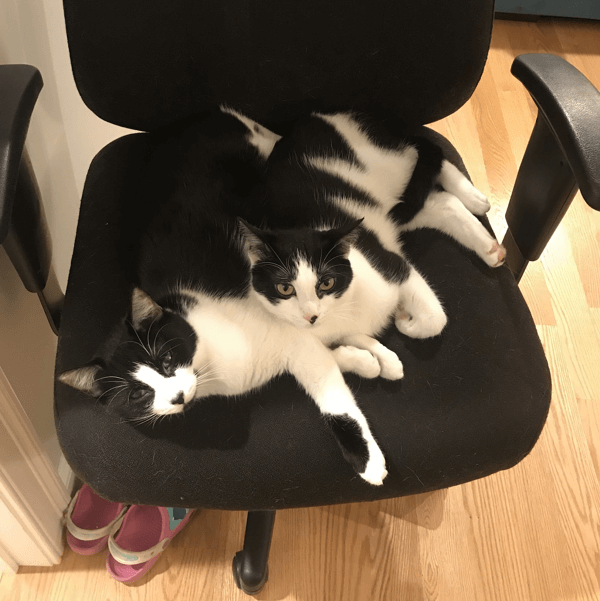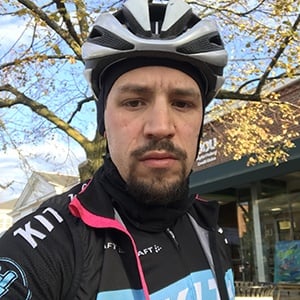As with most startups (and companies in general), it’s important for the team at Tidelift to stay in pretty close communication so that everyone knows what others are working on. It helps us avoid repetition and helps everyone stay more connected.
The typical way that a lot of places do this is to institute a daily standup. The concept of the daily standup comes from scrum and agile development methodologies as a short meeting for everyone to share what they did, what they’re doing next, and any blockers they might have. The name standup comes from the intent to keep the meeting short and thus having everyone stand for the duration.
So, when we started Tidelift, we instituted a daily standup even when it was just the four founders. We picked a convenient time and set it on the calendar for 15 minutes. Since Donald and I are in Boston, we started with the two of us standing around a monitor with a video camera and Luis and Havoc joined remotely. Pretty quickly, we realized that wasn’t ideal, so Donald and I began individually joining from our desks even though we sat 10 feet away from each other.
As we began hiring people, we kept the pattern. At first, our hires were all focused on product-related things, so it worked. We kept it to 15 minutes, with everyone still joining from their own computer, regardless of their physical location. Then, at some point in the late fall, things started to break down. We’d run over time for people to say what they’d been working on. Some members of the team felt awkward diving into technical details that were less relevant for the non engineers in the (virtual) room.
It was time for a change
As many organizations do these days, we use Slack for a lot of our team communication. I had seen a bunch of tools and bots popping up to help push people to do asynchronous standup-style updates via Slack. Sometimes this involved a bot that could aggregate updates a special channel. We wanted to keep the updates, but also wanted to keep the daily connection to the team. Especially for folks who were working from home, they appreciated the daily chance to interact with another human (dogs and cats are awesome but they don’t usually talk back!).

So we decided to try an experiment. We killed the synchronous video standup and moved those updates to Slack. This allowed people to provide more depth, especially by threading the details, while also encouraging more extemporaneous and extended discussion about projects without derailing everyone on the team.
But we kept the time slot alive, renamed it Water Cooler, and made it optional. So, much like at a single location company where people will gather around the water cooler or coffee machine and talk about what’s on their minds, we have a time where people can do that.
Sure, these conversations sometimes happen in one of our many #social- slack channels but there’s a different feel when it’s a video conversation. Some days, we talk about the weather. Some days it’s about the latest video game someone picked up. Some days it’s about a recent conversation with an open source developer who’s really interested in joining the Tidelift community. And that’s the cool part… it’s not structured and we just have the random conversations that you’d have with your coworkers.
The status updates are still there via Slack and have their value, but the standup as a meeting is dead. Viva la water cooler!
If you're interested in learning more about Tidelift and the Tidelift Subscription, subscribe to updates and follow us on Twitter.


 50 Milk St, 16th Floor, Boston, MA 02109
50 Milk St, 16th Floor, Boston, MA 02109